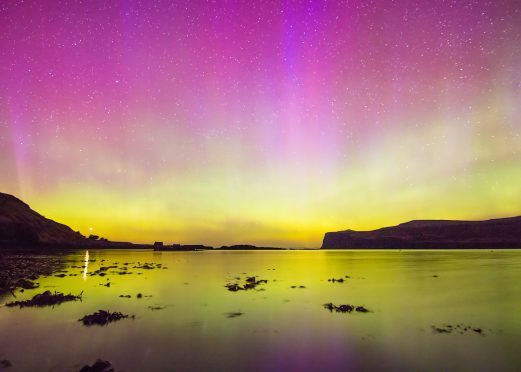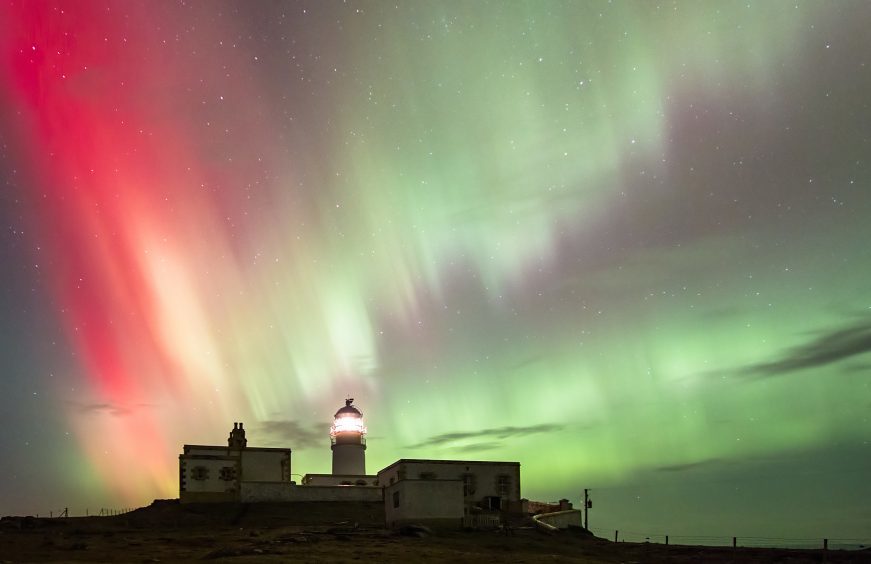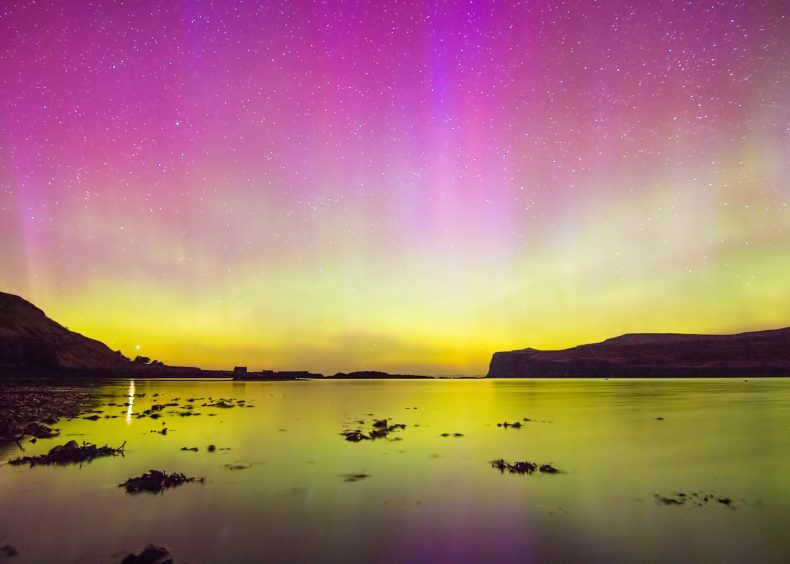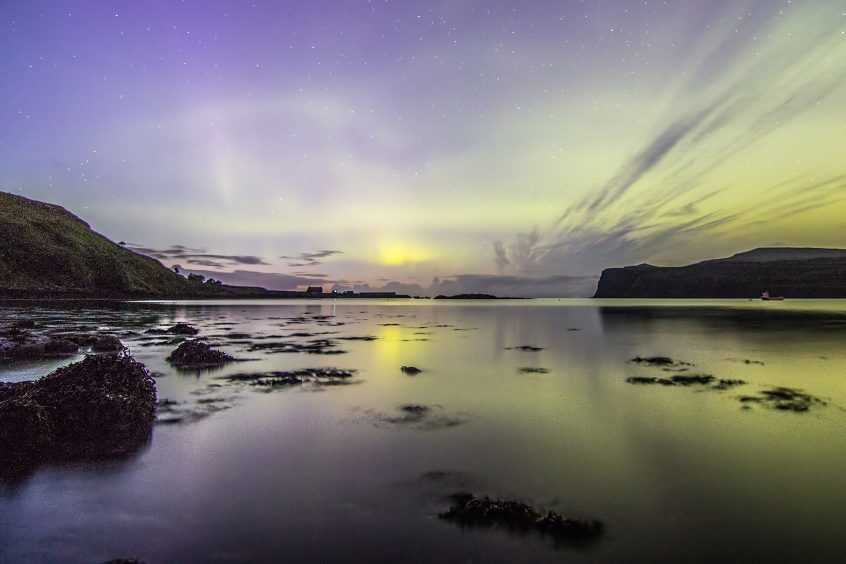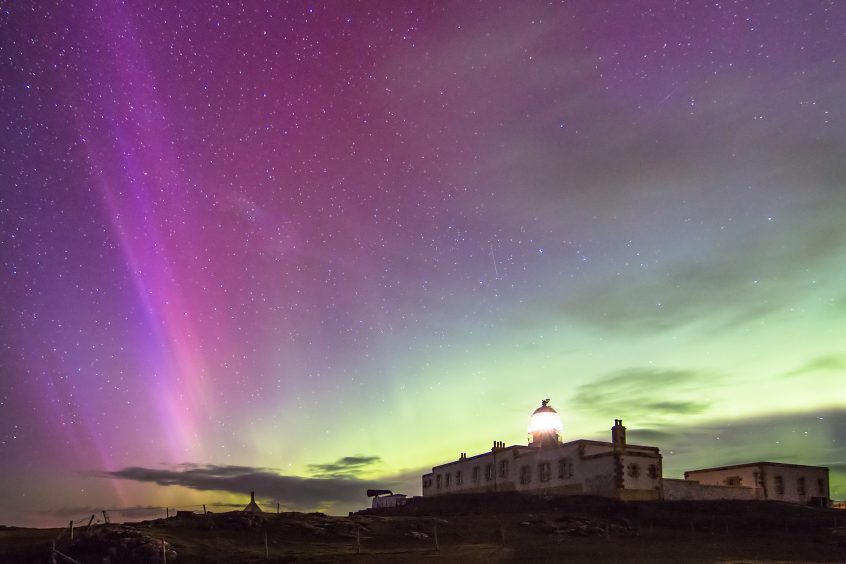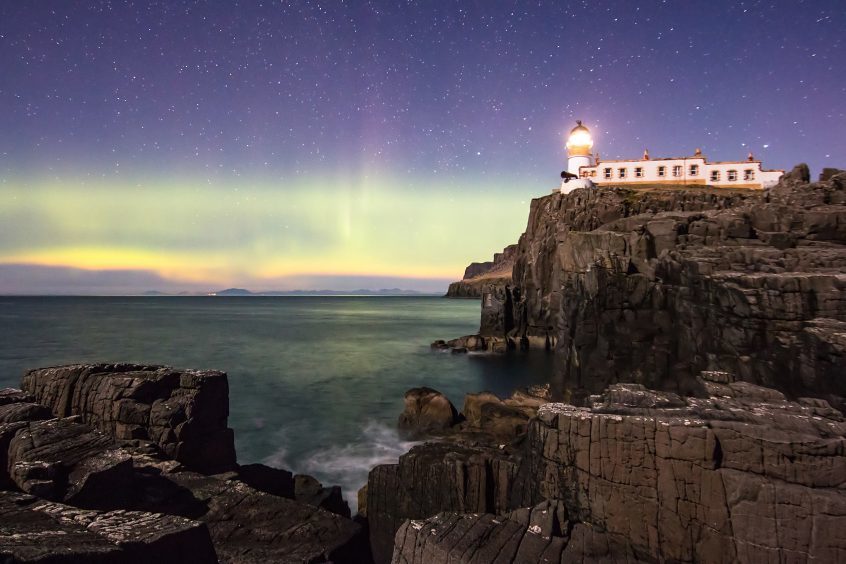It’s not the Northern Lights of Old Aberdeen that get stargazers across the world excited these days, but the Northern Lights in the skies over Glendale on the Isle of Skye that are the big talking point of late – and much of that is down to the hard work and dedication of a part-time crofter.
Every night, more than 1,000 people log on to an app he’s created which accurately predicts when the Northern Lights can be seen.
What’s remarkable is that Andy Stables didn’t grow up looking at the stars.
In fact, he rarely saw them growing up in Yorkshire, although like most young schoolboys, he had more than a passing interest in space and astronauts.
During a holiday to Scotland, he and his wife Alison, who now works for the Highland Council, visited Skye and fell in love with the place. “Stepping out the front door and looking up at these huge dark skies was just amazing,” said Andy, 48.
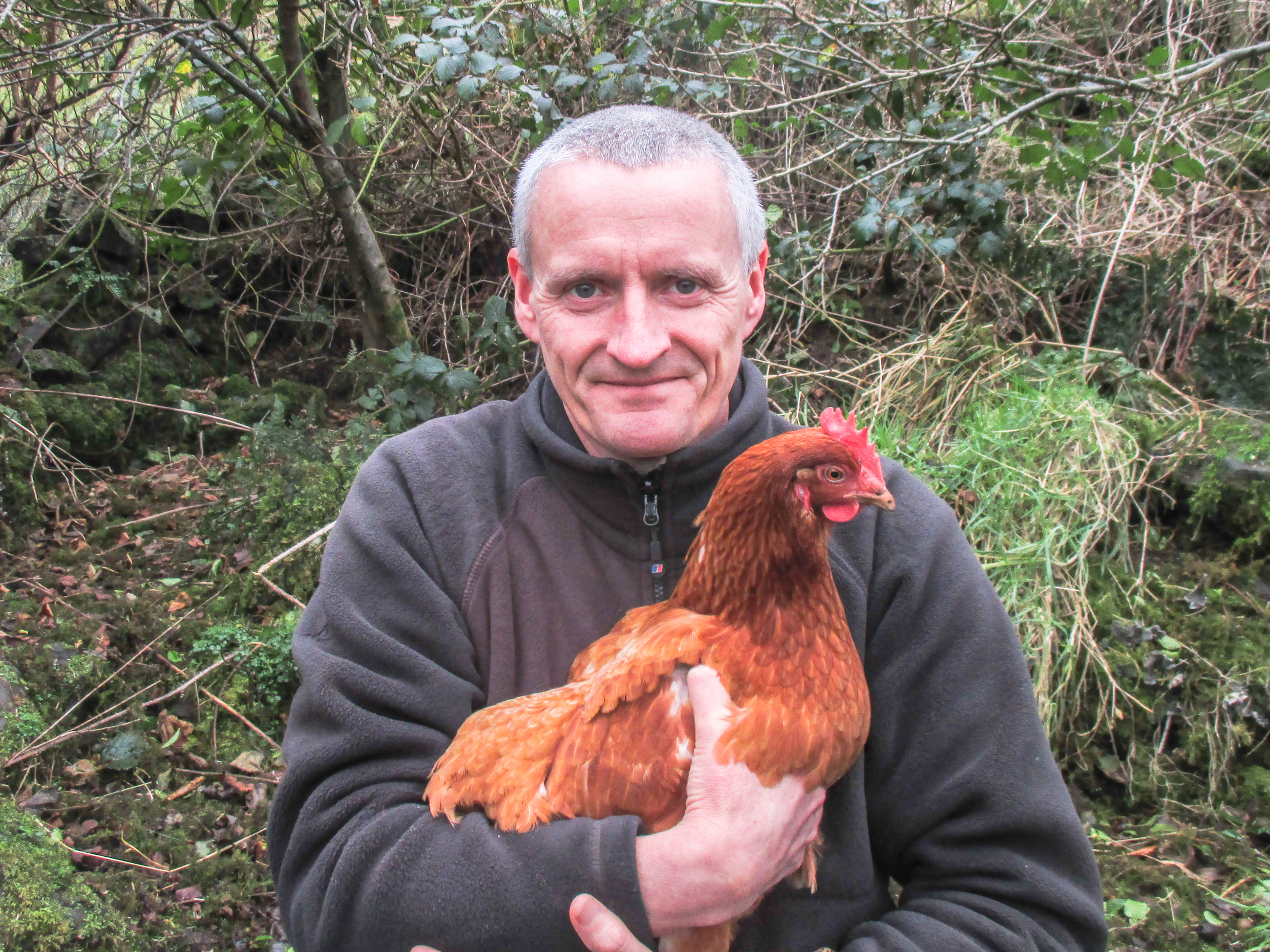
Scotland enjoys some of the darkest skies in Europe and areas such as Skye, Lochalsh and the northern west coast are largely free from the light pollution which can dominate the skylines over big towns and cities.
As well as inky black skies, on clear nights you can see thousands of stars twinkling, graceful constellations and enjoy the amazing experience of the aurora borealis, also know as the Northern Lights.
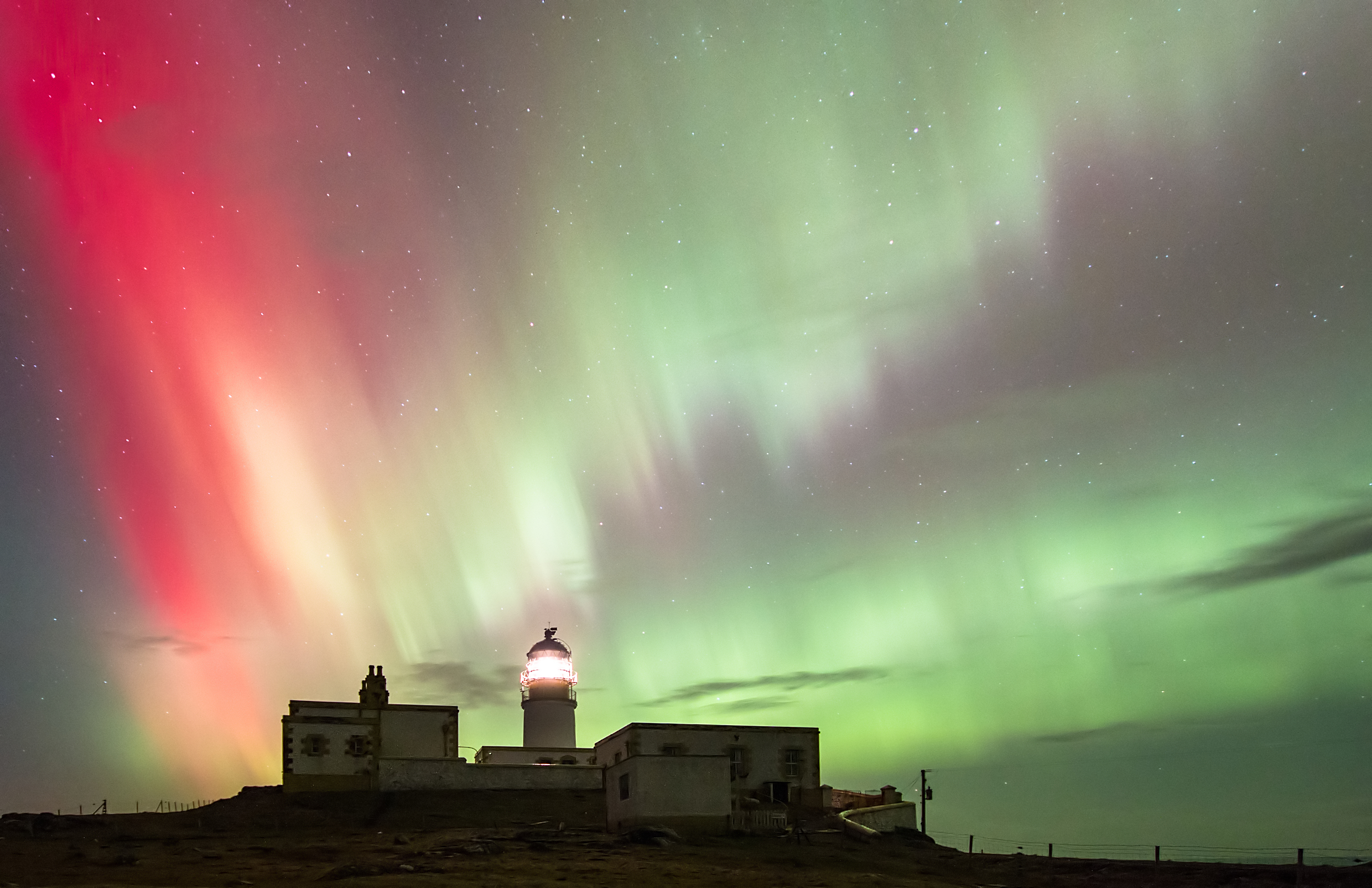
“After holidaying in Skye we fell in love with the place and ended up buying a house here, which we used as a second home initially, but loved it so much we made it our full-time home 10 years ago,” said Andy who works part-time as a crofter and part-time as a web developer.
“I got into star gazing byaccident as there’s so much space and dark skies here you can’t help but look up at the stars. I’d seen the auroras a few times without fully realising what I was seeing, then during strong displays I’d see distinct columns and try tocapture these on camera.
“It took me a long time to work out how do it but when I turned over the camera and saw the image I’d captured for the first time it just blew my mind.
It was an amazing sight and from then on I became addicted to taking photographs of the spectacle.”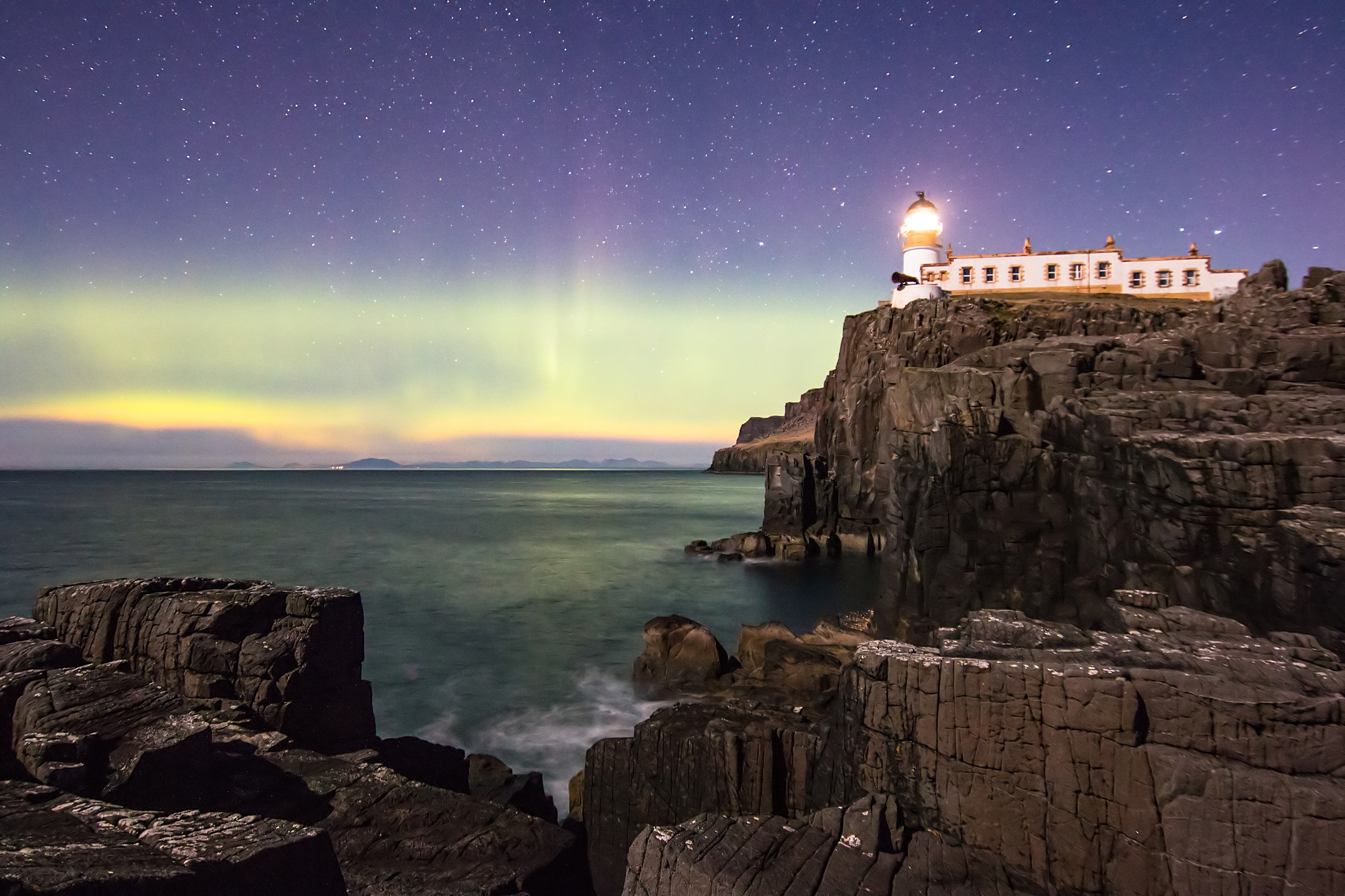
While Alison enjoyed seeing some of the more spectacular shows nature was putting on, for Andy it became something of an daily obsession.
“It can be cold and windy. You have to dodge showers and clouds. It can be tedious and boring most of the time and often there’s nothing to see with the naked eye, but I love it,” said Andy.
While his interest was initially in taking great pics, that quickly developed into a desire to know more about the science behind the aurora borealis and finding a way to predict when anaurora would happen.
“An aurora is basically light caused by charged particles in the Earth’s magnetosphere.
Quite a complex process called a substorm occurs and solar winds blow charged particles at the earth. These interact with the earth’s atmosphere and distort the magnetic field to create a big bulge at the side of the earth opposite the sun.
“Eventually the bulge becomes so big it snaps. Field lines break up and release the particles which are then sucked back to earth at the magnetic poles. It’s the particles releasing their energy as light that become the aurora,” said Andy.
On a bird table outside his front door, he set up a calibrated piece of wood which he’d use to prop up his camera.
“As soon as it became dark I’d nip outside and take a photograph every 15 minute or so and repeat this until it was bedtime. I spent a year doing this.
“As a result, I discovered, by accident, a diffuse aurora which is basically a very weak aurora that appears as a light red band on the horizon.
“I realised this always occurred at the start of the substorm, so I spent a whole year taking pictures of every single substorm then correlated all the data and photographs I’d collected against all the available data available online from satellites and magnetometers and from that learned to predict accurately when an aurora would occur,” said Andy.
Armed with this new-found information he’d generously share it with interested friends and neighbours.
“I started a sort of phone-a-friend list so every time I spotted the aurora happening I’d phone to let them know so they could head out with their cameras, but it got to the point where I had so many people to phone I’d miss the spectacle myself!”
Following advice from colleagues he set up a Facebook page and developed a free app, so others could enjoy the regular spectacles above the dark skies of Glendale too.
“It’s been crazy, with something like more than 11,000 people following the Glendale Sky Auroras Facebook page,” said Andy.
“It’s now taking up a lot of my spare time as it’s pretty complex and takes a lot of coding to put together.
“I’m not making any money out of it and have no plans to write a book or anything, I just think it’s a nice thing to be able to help people see the auroras and I get a lot of thank you messages from people who are delighted that, as a result of the app, they have been able to see them and photograph them,” said Andy.
